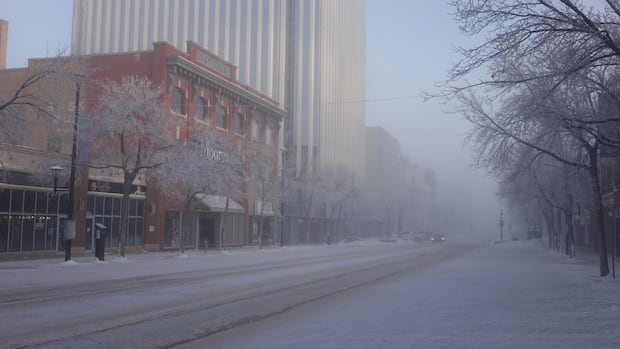Although much of Canada is focused on the extraordinary amount of snow dumped on parts of Ontario and Quebec, Saskatchewan is experiencing its own attention-grabbing weather system — a polar vortex.
The province has spent days in an extended cold snap, with some areas recording temperatures below –40 C and wind chill making it feel more like –50 C.
On Tuesday, the entire province remained under an extreme cold warning.
David Phillips, a climatologist for Environment and Climate Change Canada, said that February in Saskatchewan is typically warmer than January. This year has been a rare exception.
“When you look at all of the whole month in places like, for example, Regina, the temperatures have been about almost 12 or 13 degrees colder than they should be,” Phillips told CBC’s Morning Edition on Tuesday.
It’s cold, it’s icy and it’s dreaded by Canadians across the country. It’s the polar vortex. Weather specialist Riley Laychuk breaks down what the polar vortex is and why it might not be as scary as it sounds.
Sunday and Monday saw new daily low temperature records set in multiple communities across Saskatchewan.
In Regina, a temperature record of –38.9 C set in 1927 was broken when temperatures plunged to –40.4 C on Monday.
Saskatoon’s old record of –40 C set in 1903 was broken as the city plunged to –40.6 C on Monday.
The Spiritwood area’s old record of –40.6 set in 1967 was broken by a temperature of –42.3 C on Monday.
“It’s warmer in Baffin Island, [Nunavut] than it is in Saskatchewan.… You’re the cold pole of North America,” Phillips said.
Snowmobilers are known for their sense of adventure, but even they have their limits. Kelvington Trailblazers’ president Bart Hartl discusses what’s at risk venturing out in frigid temps.
Phillips did not have to look too far back to find a near-equally frigid February in Saskatchewan, as 2019 saw similar temperatures.
The good news is that the cold snap is almost over.
“[The] polar vortex is just not going to dominate the landscape anymore,” Phillips said.
The climatologist said a system change will soon push temperatures to above freezing.
“These are temperatures that instead of being 23 degrees below normal, they’re 10 degrees above normal,” Phillips said.
Those warmer temperatures should stick around for March, although Phillips said it won’t be warm enough to break out the shorts quite yet.


